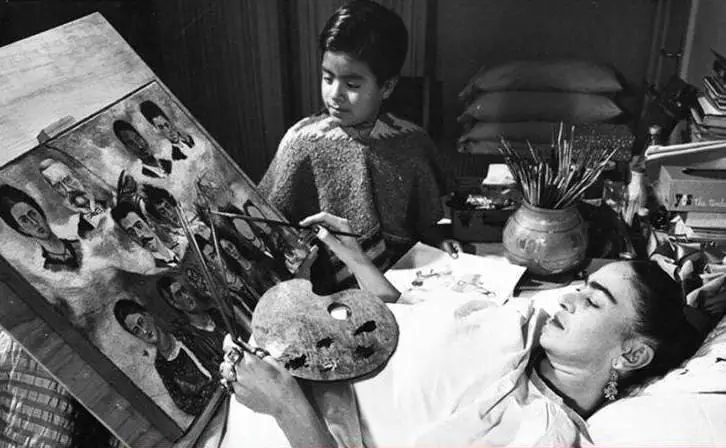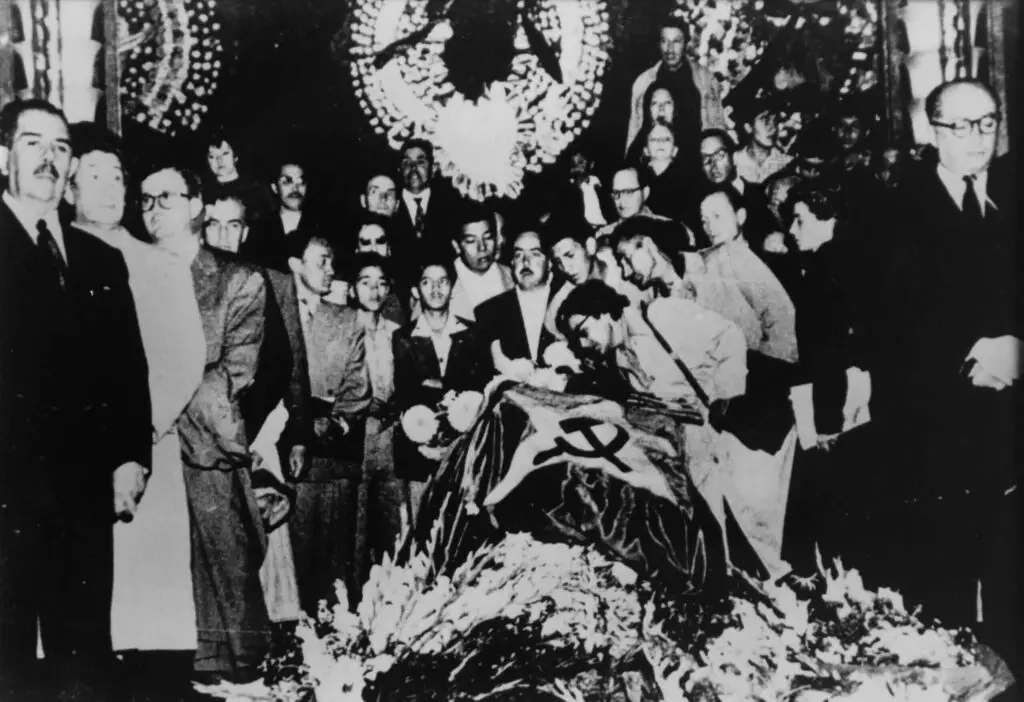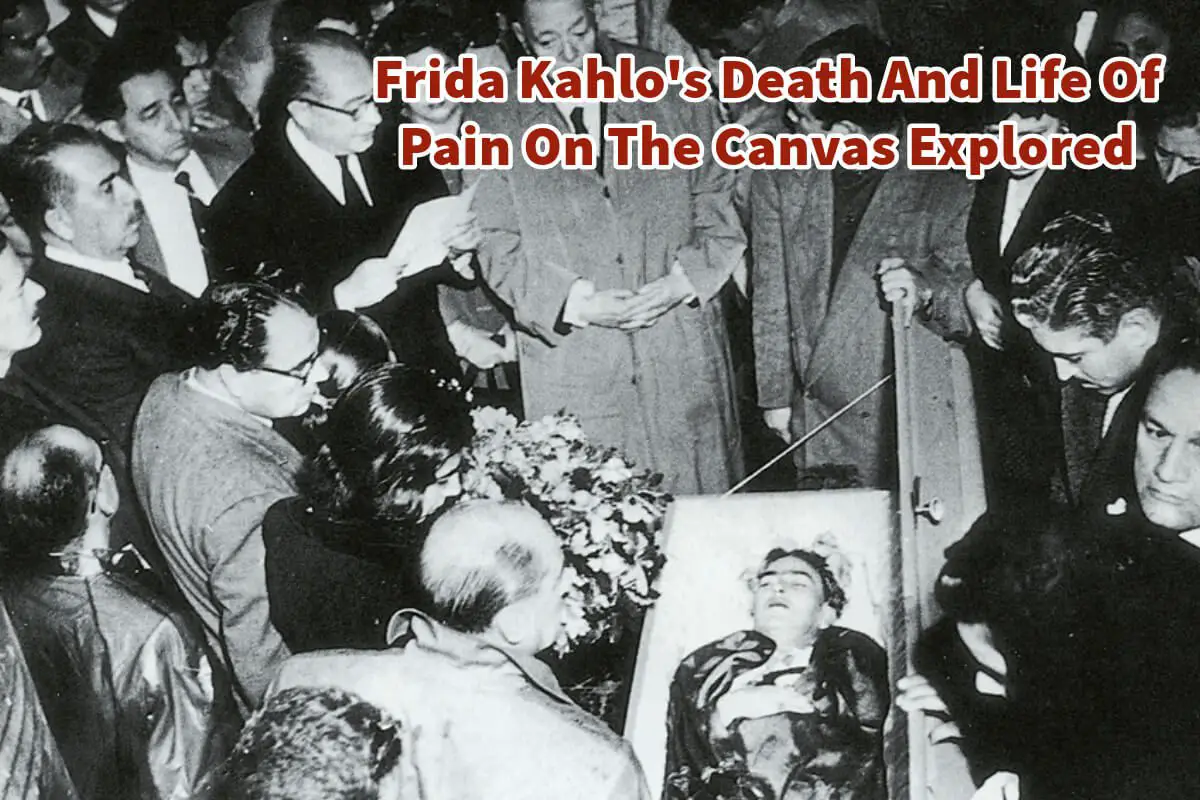Frida Kahlo was not just an extraordinary artist; she was also a person who endured immense suffering. Her artwork vividly captures the pain she experienced throughout her life.
Frida Kahlo passed away in 1954, approximately a year after undergoing the amputation of her right leg. Even in death, her life is shrouded in mystery as rumors circulate about the actual cause of her passing. Continue reading to delve deeper into the art, life, and enigmatic death of Frida Kahlo.
Table of Contents
- Frida Kahlo: The Art Of Living And Dying Through The Canvas
- Frida Kahlo – Art As A Medical Record
- Frida Kahlo’s Final Years And Mystery Surrounding Her Death
- Kahlo’s Artistic Impact And Legacy
- Frequently Asked Questions
- Related Questions
Frida Kahlo: The Art Of Living And Dying Through The Canvas
Frida Kahlo, an artist celebrated for her compelling visual narratives, is a figure equally defined by her life’s tragedies and pains as much as her brilliant artistic legacy and known for her surreal, hauntingly honest paintings.

Kahlo’s life story adds another layer of depth to her art. It was a life tinged with medical hardships and physical suffering, which is crucial to understanding her creative journey. Here, we explore the poignant story of Kahlo’s life, focusing on her ongoing battle with health problems and the complex circumstances surrounding her untimely death.
Childhood And Early Life
Born in Mexico in 1907, Frida Kahlo’s life was marked with hardships. When she was just six years old, she contracted polio, which led to a lifetime of physical issues.
The disease affected her right leg, leaving it thinner and shorter than the other. Despite this early setback, she was a resilient child who eventually learned to dance and play sports.
The Trolley Accident That Changed Everything
At 18, Kahlo experienced a catastrophic trolley accident that led to multiple severe injuries, including fractures in her spinal column, a crushed right foot, and a shattered left leg. An iron handrail pierced her pelvis, leading to a lifetime of reproductive health issues and an inability to bear children.

This accident did more than scar her physically; it would serve as the dark backdrop against which her future works would come to life.
Turning Suffering Into Art
Following the accident, Kahlo spent months confined to a bed. During this period, her life took a pivotal turn. To cope with her pain and restricted mobility, she began painting. Kahlo’s mother had a special easel made that would enable her to paint while lying down and even attached a mirror to the ceiling above her bed.
Kahlo started painting on the plaster corsets that helped align her fractured spine, transforming them into canvases that portrayed her physical and emotional anguish.
Frida Kahlo – Art As A Medical Record
Frida Kahlo is well known for painting a lot of her physical suffering in her paintings. Her art served as an autobiographical record of her medical history.
Her best-known works depict her physical and emotional suffering so vividly that they have been likened to medical case reports. And they show the viewer what she went through in her emotional life and her physical pain and suffering.
Frida Kahlo’s Final Years And Mystery Surrounding Her Death
In 1953, another blow came to Frida Kahlo when her right leg had to be amputated due to gangrene, suspected to be the result of an unnecessary surgery. This was a massive blow to Frida Kahlo to lose her right leg.
Kahlo died about a year later on July 13, 1954. While the official cause of her death was listed as a pulmonary embolism triggered by pneumonia, there has been speculation that it could have been a deliberate overdose of pain medication.
Given her history of physical torment, the idea that she might have sought to end her suffering is not entirely implausible. This ambiguity adds another layer to the complicated narrative of her life and work.

We do not know if Frida Kahlo took her own life; this has never been substantiated, and if she did, her family and others worked to keep it out of the press and to ensure that the official cause of death was something other than suicide. But we do know that she had a life that was filled with a lot of pain.
Kahlo’s Artistic Impact And Legacy
Despite her myriad health issues, Kahlo’s artistry remained irrepressible. Her work speaks to her resilience, courage, and unflinching self-examination.
She painted her pain, loves, fears, and joys, weaving them into images that transcend time and geography. The truth about her death may never be fully understood. While it adds an element of mystery to her life story, it also underscores the sheer emotional and physical agony she endured.
Frida Kahlo’s work is a powerful testament to the enduring human spirit. She transformed her suffering into art, taking control of her narrative in a way few have managed.
As we contemplate her life and untimely death, we are reminded of the transformative power of art and the resilience of the human spirit, even in the face of overwhelming adversity. Kahlo’s story remains an enduring source of inspiration, serving as a lens through which we can explore the complex relationship between physical suffering and creative output.
Frida Kahlo’s life is a tale of courage, love, pain, and an unwavering commitment to life—warts and all. While her art continues to capture the public imagination, her life story—etched in each brushstroke of her paintings—truly immortalizes Frida Kahlo.
Anita Louise Art is dedicated to art education, great artists, and inspiring others to find and create their art. We love art that uplifts and inspires. #ArtToMakeYouSmile! #ArtToMakeYouHappy!
If you want to see any of my art, you can find out more by clicking here. If you are interested in what inspires me and my paintings, you can discover more by clicking here.
We have a free newsletter and would love you to be part of our community; you can subscribe to the newsletter by clicking here. If you have any questions, I would be happy to talk to you. You can reach me, Anita, by clicking here.
Subscribe to our Anita Louise Art YouTube Channel with great videos and information by clicking here.
Join us for our podcast “5 Minutes With Art.” Spend just 5 minutes a week with us to discover and learn about great art and artists. You can find out more about our podcast by clicking here.
Frequently Asked Questions
How did Frida Kahlo’s personal experiences influence her artwork?
Frida Kahlo’s art was deeply influenced by her personal struggles, including physical and emotional pain. Her paintings often served as a cathartic expression of her experiences, blending surrealism with elements of her Mexican heritage.
What were the major sources of pain in Frida Kahlo’s life?
Frida Kahlo experienced significant physical and emotional pain throughout her life. A bus accident in her youth left her with severe injuries, leading to a lifetime of health issues. Additionally, her tumultuous marriage with Diego Rivera and the emotional toll of miscarriages contributed to her suffering.
How did Frida Kahlo cope with her pain through her art?
Kahlo used her art as a means of coping with her pain and expressing her innermost feelings. Her paintings often feature symbolic imagery, self-portraits, and vibrant colors, providing a window into her emotional and physical struggles.
What is the significance of Frida Kahlo’s self-portraits in her body of work?
Frida Kahlo’s self-portraits are a central aspect of her art. They not only showcase her unique style but also serve as a reflection of her identity, pain, and resilience. Her paintings offer a raw and honest portrayal of her physical and emotional self.
When did Frida Kahlo pass away, and what were the circumstances surrounding her death?
Frida Kahlo passed away on July 13, 1954. She died approximately a year after the amputation of her right leg due to complications from gangrene. The circumstances surrounding her death remain somewhat mysterious, with rumors and speculations about the actual cause.
What are the different theories surrounding the cause of Frida Kahlo’s death?
Various theories surround the cause of Frida Kahlo’s death. While official reports attribute it to pulmonary embolism, some suggest that she may have taken her own life. Others speculate on the role of medical negligence or complications from her numerous surgeries.
How did Frida Kahlo’s art contribute to her legacy after her death?
Frida Kahlo’s art gained international recognition posthumously, contributing significantly to her legacy. Her unique style and powerful storytelling through art have made her an iconic figure in the art world and a symbol of strength and resilience.
What impact did Frida Kahlo have on the feminist art movement?
Frida Kahlo is often considered an icon of the feminist art movement. Her unapologetic exploration of female experiences, identity, and pain resonated with many women. She paved the way for discussions on gender roles, autonomy, and the female perspective in art.
How has Frida Kahlo’s art continued to inspire contemporary artists?
Frida Kahlo’s influence extends to contemporary artists who draw inspiration from her use of symbolism, vivid colors, and personal narrative. Her ability to merge the personal and political in her art continues to resonate with artists exploring similar themes today.
What is the significance of Frida Kahlo’s legacy in the art world today?
Frida Kahlo’s legacy is enduring and multifaceted. She is celebrated not only for her artistic contributions but also for breaking societal norms and challenging conventions. Her legacy continues to inspire artists, feminists, and individuals grappling with issues of identity and resilience.
Related Questions
Guide To Frida Kahlo Self-Portraits Paintings And Why They Are Important
Frida Kahlo’s self-portraits give us a unique look and understanding of her life, suffering, resilience, and inner strength. The self-portraits show her physical and psychological torture. Frida Kahlo’’s self-portraits created both powerful and beautiful artworks. Frida Kahlo and her self-portraits left us with a timeless legacy of strength and courage.
By clicking here, you can discover more by reading Guide To Frida Kahlo Self-Portraits Paintings And Why They Are Important.
Frida Kahlo’s Accident: How The Bus Tragedy Changed Her Life
At age 18, on the verge of fulfilling her dreams of becoming a doctor, Kahlo’s path took an unforeseen and tumultuous turn. September 17, 1925, marked the fateful day when a bus accident forever changed the trajectory of her existence, leaving her with profound physical and emotional scars. Little did she know that this transformative event would ignite the flame of her artistic journey, infusing her creations with an unparalleled depth and forging a unique and memorable art style that would captivate the world.
By clicking here, you can learn more by reading Frida Kahlo’s Accident: How The Bus Tragedy Changed Her Life.
Guide To Frida Kahlo’s Artwork, 10 Frida Kahlo Important Artwork
Frida Kahlo is regarded as one of the most significant figures in art history. Some of her most famous works make Frida Kahlo truly special; she has a unique blend of surrealism, bold ethnic traditions, and personal experiences, all while producing truly remarkable pieces that will continue to captivate viewers for generations to come.
By clicking here, you can learn more by reading Guide To Frida Kahlo’s Artwork, 10 Frida Kahlo Important Artwork.

